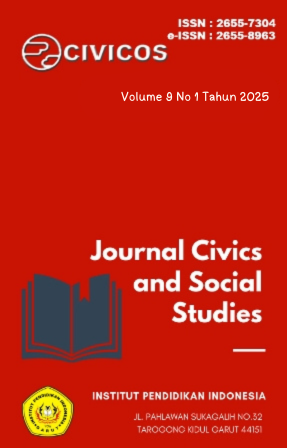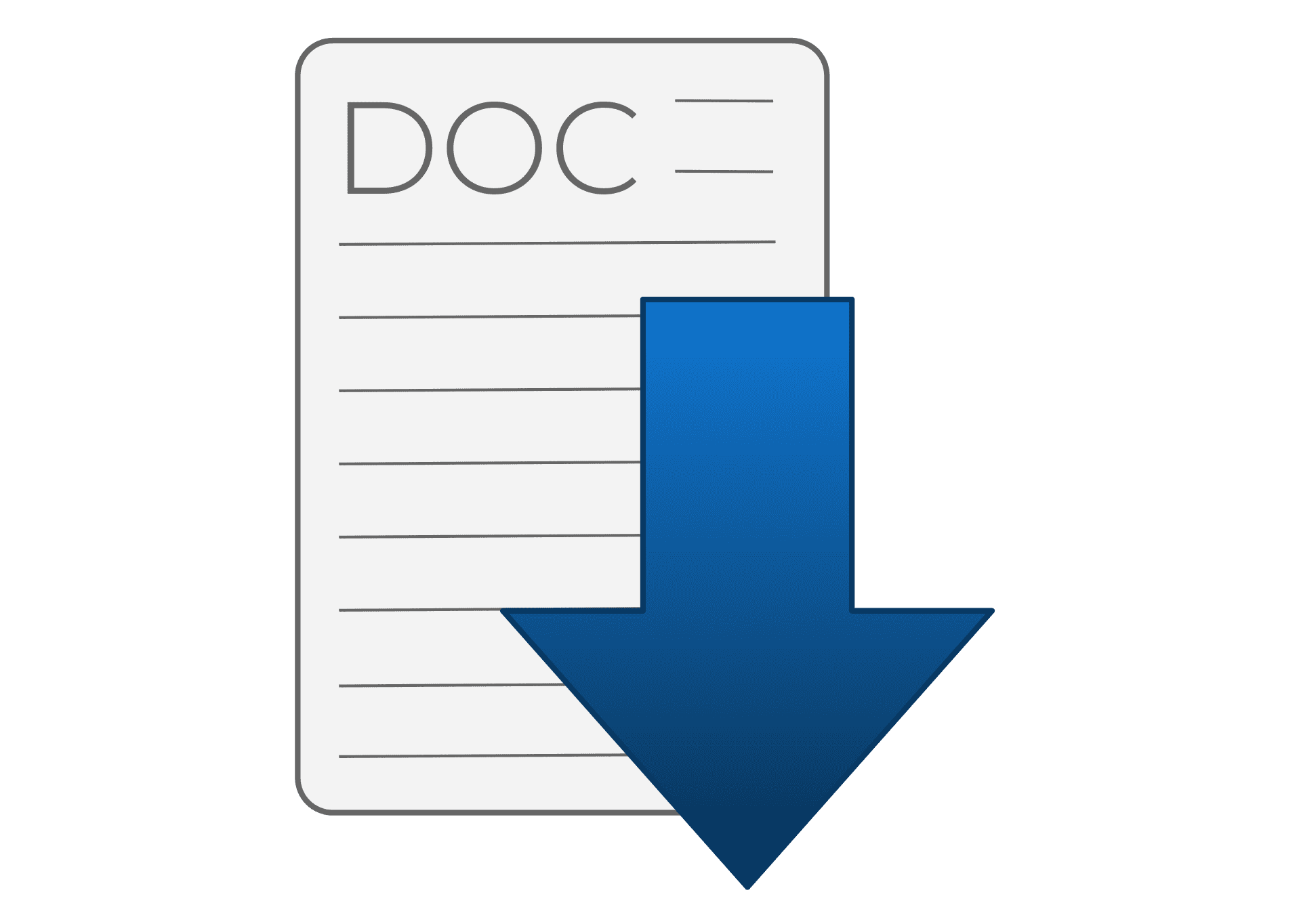THE IMPACT OF VIOLENT SOCIAL MEDIA CONTENT ON STUDENTS' SOCIAL ANXIETY
DOI:
https://doi.org/10.31980/journalcss.v9i1.2783Keywords:
Media sosial, kekerasan, kecemasan sosial, toksik, ujaran kebencianAbstract
The increasing use of social media and the ease of access to information have made social anxiety among university students an issue that requires special attention. This study aims to reveal the impact of violent content on social media on the level of social anxiety among students of the Social Studies Education Program at IPI Garut. The research employed a survey method with a correlational quantitative approach, allowing the measurement of the strength of the relationships between the studied variables. Data were collected through an online questionnaire distributed via the Google Forms platform. A total of 108 active students participated as respondents in this study. The respondents were selected using a proportional stratified random sampling technique. The main instrument for data collection was a questionnaire distributed online to the students. The analysis results showed a significant relationship between the consumption of violent content on social media and students' social anxiety. It was found that there was a strong correlation for the indicator of hate speech and toxic text content at 0.635, a strong correlation for exposure to violent images/graphics at 0.760, a strong correlation for algorithmic reinforcement of violent content at 0.699, and a moderate correlation for real-world violent content at 0.593
Keywords: Social media, violent content, social anxiety.
References
Ahmad, A. R., & Murad, H. R. (2020). The impact of social media on panic during the COVID-19 pandemic in iraqi kurdistan: Online questionnaire study. Journal of Medical Internet Research, 22(5). https://doi.org/10.2196/19556
Alkomah, F., & Ma, X. (2022). A Literature Review of Textual Hate Speech Detection Methods and Datasets. In Information (Switzerland) (Vol. 13, Issue 6). MDPI. https://doi.org/10.3390/info13060273
Backe, E. L., Lilleston, P., & McCleary-Sills, J. (2018). Networked Individuals, Gendered Violence: A Literature Review of Cyberviolence. Violence and Gender, 5(3), 135–146. https://doi.org/10.1089/vio.2017.0056
Bhattacharya, S., Saleem, S. M., & Nath, S. (2025). Screened Shadows: Navigating the Impact of Violent Movies and Crime OTT Series on Mental Well-Being. Indian Journal of Community Medicine. https://doi.org/10.4103/ijcm.ijcm_360_24
Carr, C. T., & Hayes, R. A. (2015). Social Media: Defining, Developing, and Divining. Atlantic Journal of Communication, 23(1), 46–65. https://doi.org/10.1080/15456870.2015.972282
Chapman, J., Halldorsson, B., & Creswell, C. (2020). Mental Imagery in Social Anxiety in Children and Young People: A Systematic Review. In Clinical Child and Family Psychology Review (Vol. 23, Issue 3, pp. 379–392). Springer. https://doi.org/10.1007/s10567-020-00316-2
Creswell, J. W. (2012). Educational Research: Planning, Conducting, and Evaluating Quantitative and Qualitative Research (4th ed.). Boston, MA: Pearson.
Dapprich, A. L., Becker, E. S., Derks, L. M., Legenbauer, T., & Lange, W. G. (2023). Specific interpretation biases as a function of social anxiety and callous-unemotional traits in a community and a clinical adolescent sample. Child and Adolescent Psychiatry and Mental Health, 17(1). https://doi.org/10.1186/s13034-023-00585-z
Gamal, D., Alfonse, M., Jiménez-Zafra, S. M., & Aref, M. (2023). Intelligent Multi-Lingual Cyber-Hate Detection in Online Social Networks: Taxonomy, Approaches, Datasets, and Open Challenges. Big Data and Cognitive Computing, 7(2). https://doi.org/10.3390/bdcc7020058
Hur, J., Deyoung, K. A., Islam, S., Anderson, A. S., Barstead, M. G., & Shackman, A. J. (2020). Social context and the real-world consequences of social anxiety. Psychological Medicine, 50(12), 1989–2000. https://doi.org/10.1017/S0033291719002022
Isha, Anjali, Karuna Sharma, Kirti, & Vibha Pratap. (2025). Classifying Toxic Comments with Machine Learning and Deep Learning Approaches. International Journal of Scientific Research in Science and Technology, 12(2), 1074–1082. https://doi.org/10.32628/IJSRST251222664
Kanclerz, K., Figas, A., Gruza, M., Kajdanowicz, T., Kocó, J., Puchalska, D., & Kazienko, P. (2021). Controversy and Conformity: from Generalized to Personalized Aggressiveness Detection. https://github.com/CLARIN-PL/
Kim, S., Choi, E., & Champion, J. D. (2024). Technology-facilitated Sexual Violence in South Korea: A Content Analysis of a Website for Victims. Violence Against Women, 30(11), 3077–3090. https://doi.org/10.1177/10778012231172712
Kumar, R., Bhalla, O., Vanthi, M., Wani, S. M., & Singh, S. (2024). HarmPot: An Annotation Framework for Evaluating Offline Harm Potential of Social Media Text. http://arxiv.org/abs/2403.11108
Leigh, E., Chiu, K., & Clark, D. M. (2020). The effects of modifying mental imagery in adolescent social anxiety. PLoS ONE, 15(4). https://doi.org/10.1371/journal.pone. 0230826
Liu, X., Huang, J., Yu, N. X., Li, Q., & Zhu, T. (2020). Mediation effect of suicide-related social media use behaviors on the association between suicidal ideation and suicide attempt: Cross-sectional questionnaire study. Journal of Medical Internet Research, 22(4). https://doi.org/10.2196/14940
Mamun, M., & Rashid, O. (2022). Textual Toxicity in Social Media: Understanding the Bangla Toxic Language Expressed in Facebook Comment. https://doi.org/10.17632/9PZ8SSMC49.1
Matier, L. (2021). Social media and communication (research essay). In Townsend. Julie, 21st-century media and issues. https://pressbooks.ulib.csuohio.edu/ understanding-literacy-in-our-lives/chapter/6-10-2-social-media-and-communication-research-essay/
McDermott, T. J., Kirlic, N., & Aupperle, R. L. (2018). Roadmap for optimizing the clinical utility of emotional stress paradigms in human neuroimaging research. In Neurobiology of Stress (Vol. 8, pp. 134–146). Elsevier Inc. https://doi.org/10.1016/j.ynstr.2018.05.001
Nicklin, L. L., Swain, E., & Lloyd, J. (2020). Reactions to unsolicited violent, and sexual, explicit media content shared over social media: Gender differences and links with prior exposure. International Journal of Environmental Research and Public Health, 17(12), 1–9. https://doi.org/10.3390/ijerph17124296
Nithya, D. D., S, N. K., S, T., & R, V. (2024). Advanced Social Media Toxic Comments Detection System Using AI. International Journal for Research in Applied Science and Engineering Technology, 12(4), 4719–4724. https://doi.org/10.22214/ijraset.2024.61145
Ravindran, T., Yeow Kuan, A. C., & Hoe Lian, D. G. (2014). Antecedents and effects of social network fatigue. Journal of the Association for Information Science and Technology, 65(11), 2306–2320.
Shaughnessy, K., Fehr, C. J., Ashley, M., Braham, J., Labelle, P. R., Ouimet, A. J., Corsini-Munt, S., Ashbaugh, A. R., & Reissing, E. D. (2022). Technology-Mediated Sexual Interactions, Social Anxiety, and Sexual Wellbeing: A Scoping Review. In European Journal of Investigation in Health, Psychology and Education,12(8), 904–932). MDPI. https://doi.org/10.3390/ejihpe12080066
Smith, D., Leonis, T., & Anandavalli, S. (2021). Belonging and loneliness in cyberspace: impacts of social media on adolescents’ well-being. Australian Journal of Psychology, 73(1), 12–23. https://doi.org/10.1080/00049530.2021.1898914
Sugiyono. (2019). Metode Penelitian Kuantitatif, Kualitatif dan R&D. Bandung: Alfabeta
Theodorou, M., Konstantinou, N., & Panayiotou, G. (2021). Your face scares me: Effects of Perceptual load and Social Anxiety on processing of threatening and neutral faces. PLoS ONE, 16(3 March). https://doi.org/10.1371/journal.pone.0248733
Thompson, T., van Zalk, N., Marshall, C., Sargeant, M., & Stubbs, B. (2019). Social anxiety increases visible anxiety signs during social encounters but does not impair performance. BMC Psychology, 7(1). https://doi.org/10.1186/s40359-019-0300-5
Wang, Y. (2024). The Impact of Violent Social Media Content on Human Behaviour. Lecture Notes in Education Psychology and Public Media, 42(1), 152–158. https://doi.org/10.54254/2753-7048/42/20240789



